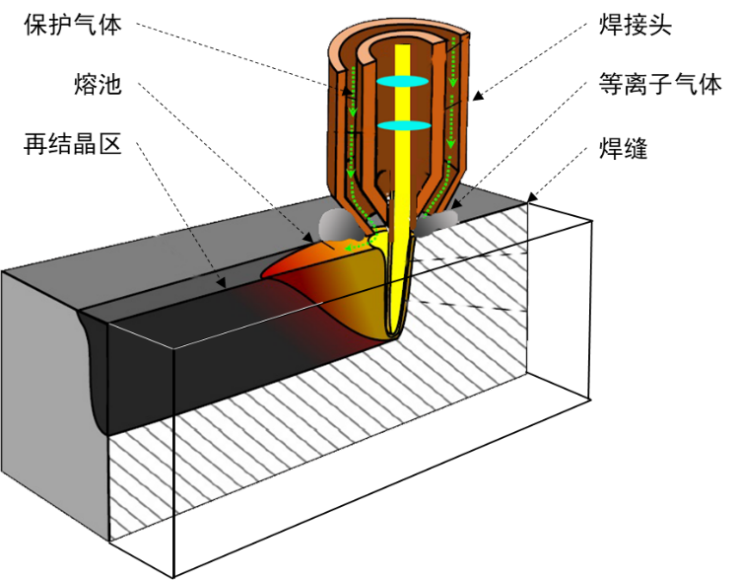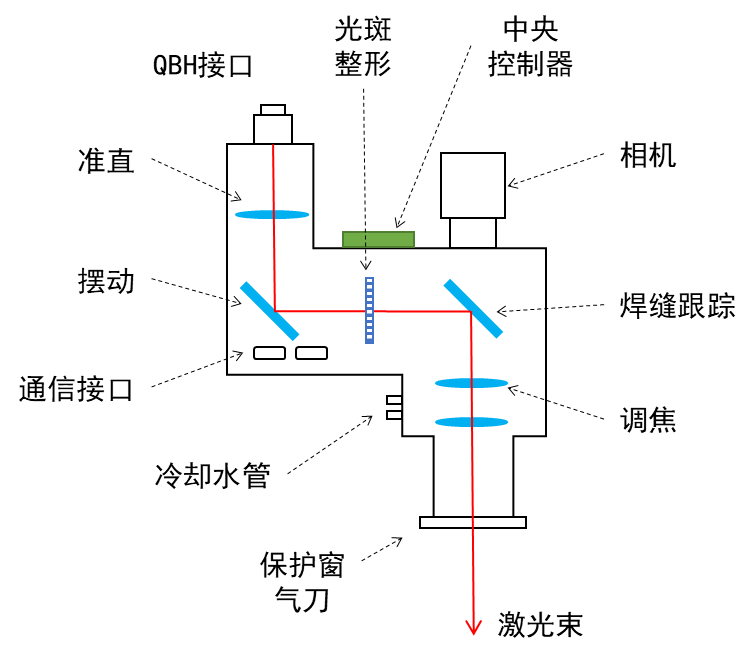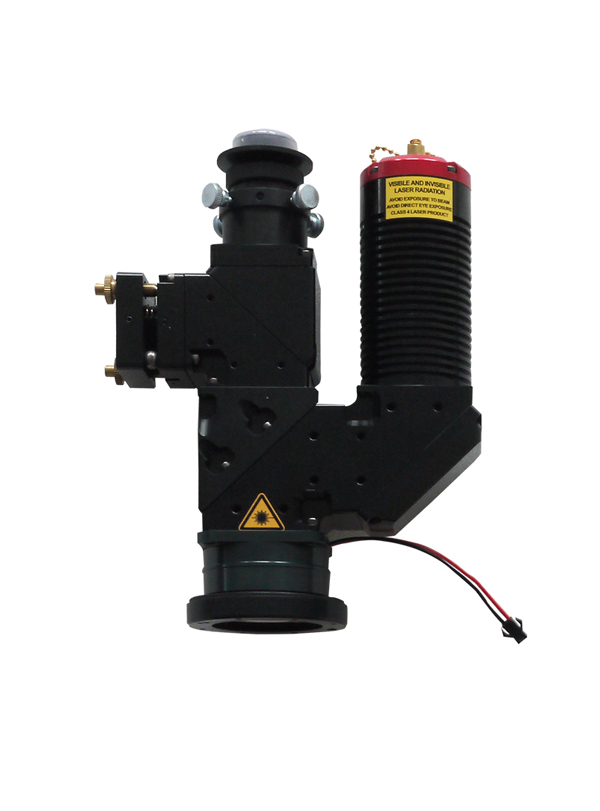Main Performance and Structure of Laser Welding Heads in Laser Welding Technology
Laser welding is one of the earliest industrial applications of lasers to gain widespread adoption. Many prominent laser application companies, both domestic and international, began their operations with laser welding. Today, laser welding technology has become a standard process in numerous industries, such as automotive, aerospace, and the rapidly growing power battery sector.
Regardless of the type of laser source used, the objective of welding remains the same: to heat and melt two pieces of material—whether they are the same or different—and then allow them to solidify into a single, unified piece.

Figure 1 Schematic Diagram of Laser Welding
Welding may seem like a simple process, but it is actually extremely complex (see Figure 1). It involves multiple intricate phenomena, including the melting of materials, the formation and mixing of the molten pool, the generation of plasma gas, the role of shielding gas, as well as recrystallization and material phase transformations. The temperature of the material rapidly rises from room temperature to over 1000 degrees and then quickly drops back to near room temperature—all within approximately one-thousandth of a second. Despite this, the welded material must exhibit properties similar to or even better than the original, such as equivalent mechanical strength and unchanged corrosion resistance.
Such a complex and dynamic process demands exceptionally high yield rates. Beyond repeated experimentation and technological innovation in process development, precise control and adaptability throughout the welding process are indispensable. These requirements also apply to laser welding heads. Simply providing focusing capability is far from sufficient; a modern welding head must also deliver precise control and extensive adjustability.
Key Performance Characteristics of Laser Welding Heads
Modern laser welding heads are no longer simple opto-mechanical components. Instead, they have evolved into intelligent front-end subsystems that integrate multiple functionalities, including optics, mechanics, sensing, imaging, control, communication, situational awareness, and algorithmic processing. An advanced laser welding head should serve as a critical foundation for intelligent machining systems.
To achieve this goal, laser welding heads must possess three essential features:
Multi-dimensional control capability for laser focal spots
This includes modern techniques such as auto-focusing, beam oscillation, and top-hat beam shaping.
Rapid response to deviations from target processing conditions
For example, the welding head should compensate for seam misalignment caused by positioning errors or material deformation during processing, thereby reducing the execution burden on the main control system.
Scalable communication capabilities
Ultimately, a laser welding head is just an end effector, requiring extensive data exchange with the main control system. This includes real-time imaging, operational status feedback, and dynamic parameter adjustments from the host system. In a medium-sized production line with 3–10 laser welding machines operating simultaneously, the welding head must support addressing functions, bidirectional buffering, and multiple communication interfaces adaptable to various network topologies.

Figure 2 Typical Structure of a Laser Welding Head
As shown in Figure 2, this illustrates the structure of a typical laser welding head, which incorporates most advanced welding head functionalities. In practice, actual laser welding heads are rationally streamlined versions of this structure. Listed below are the functional modules in order of relative importance, along with their roles and composition:
01 Optical Collimation and Focusing
The laser beam emitted from the fiber laser is collimated and focused onto the workpiece. Due to thermal effects from high-power lasers, the welding head must possess thermal compensation capabilities for the focal point.
02 Window Protection
Welding generates significant smoke and contaminants. An optimized gas nozzle design and pollution-resistant protective windows can minimize production line downtime and effectively control replacement part costs.
03 Beam Oscillation and Scanning Path Control
Programmable scan paths and oscillation speeds exceeding 10,000 RPM (>10,000 rpm) are critical for reducing spatter and improving process stability—especially for challenging materials—making this a hallmark feature of modern laser welding heads.
04 Sensor System
Monitors real-time operating conditions such as head temperature, internal air pressure, and lens contamination. Specialized sensors like height sensors and collision avoidance sensors detect the distance between the welding head and workpiece, triggering alarms for abnormal movements. Particularly valuable in robotic integration.
05 Real-Time Imaging and Analysis
Captures live welding images and provides preliminary diagnostics (e.g., identifying severe defects like missed welds).
06 Dynamic Focal Adjustment and Compensation
When welding complex 3D contours—especially with rapidly changing curves or thermal distortion—the head’s rapid autofocus and compensation functions significantly reduce the central control system’s computational load while improving response speed.
07 Beam Shaping
Adjusts beam intensity distribution for challenging materials (e.g., copper/aluminum), often yielding unexpectedly superior results.
08 Seam Tracking
This feature not only mitigates reliance on pre-processing and fixture precision but also drastically reduces programming efforts for small-batch, high-variety production—making it a favorite among engineers.
09 Control Hub
The microprocessor-based central control system continues to grow in capability, representing the highest potential for future advancements.
10 Communication Interface
High-speed interfaces compatible with diverse network topologies.

Songsheng Opto-Electric Coaxial Temperature-Measuring Vision Single-Focus Laser Welding Head (Image)
The Songsheng Opto-Electric coaxial temperature-measuring vision single-focus laser welding head utilizes a built-in coaxial CCD camera and monitoring system to precisely position workpieces. Upon receiving the positioning completion signal, the laser control unit delivers localized irradiation to the welding area for a predetermined duration.
This laser welding system employs laser diodes as the heat source to achieve localized non-contact heating, offering significant advantages:
Non-contact processing eliminates the need for soldering iron tip replacement
Ultra-fine laser beam diameter enables precision welding
Particularly critical for components incompatible with wave soldering or reflow processes, allowing post-assembly completion through localized heating methods.
Contact: Mr.Xiao
Phone: +86-13385280662
E-mail: market001@whlaser.cn
Add: Room 02, Floor 5, Building 9, Gezhouba Sun City, No. 40, Gaoxin 4th Road, Donghu New Technology Development Zone, Wuhan